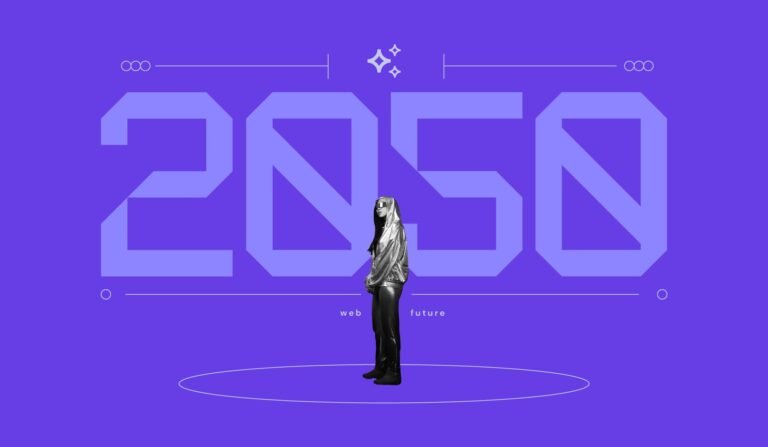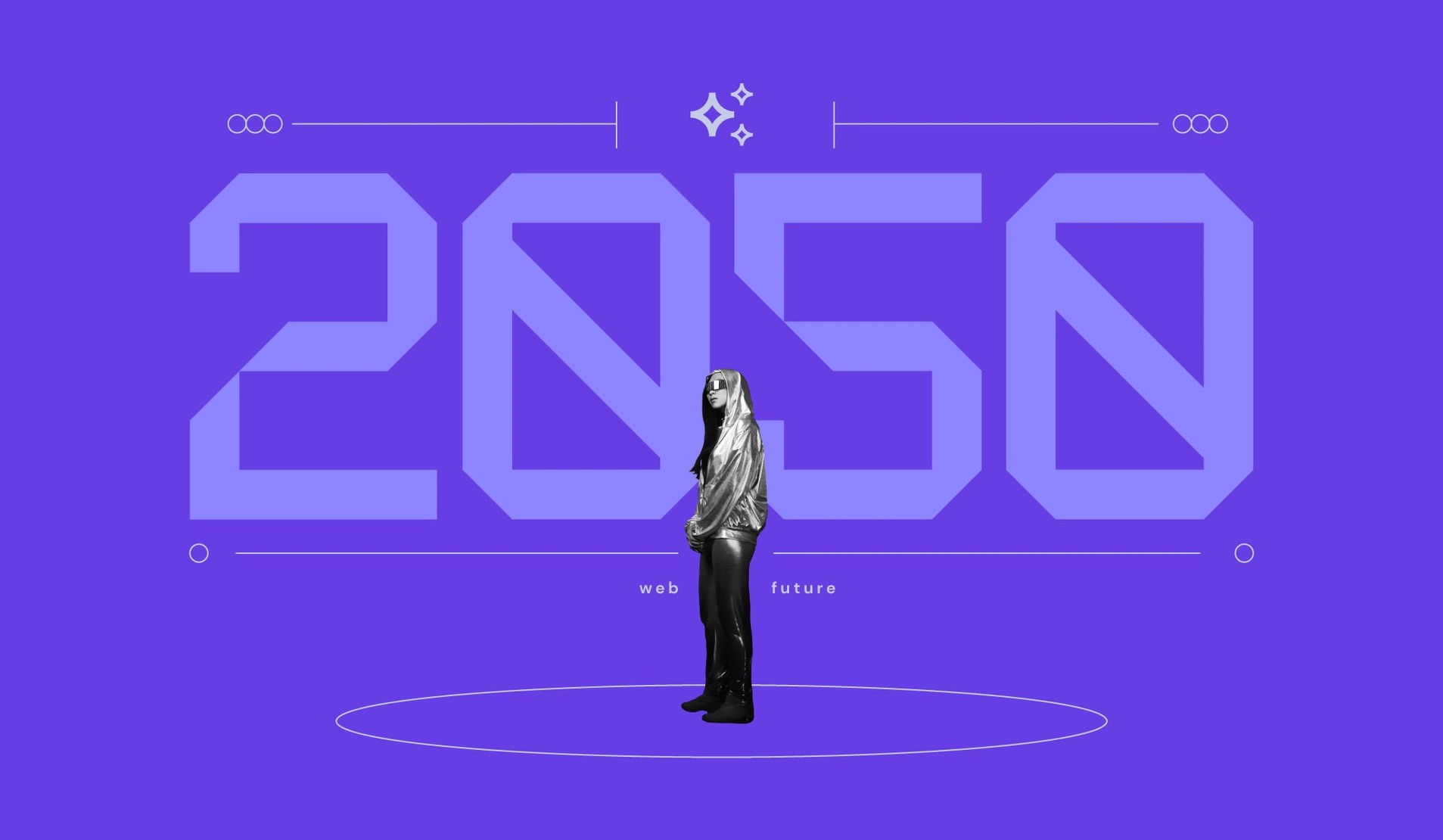

Twenty-six years ago, the Internet was a different world and websites looked very different. Fast forward to 2050, and the web design landscape is set to undergo yet another transformation.
Our prediction is that within these years, traditional computers and telephones will become obsolete. The Internet will offer immersive experiences driven by augmented and virtual reality, allowing us to physically interact through voice commands, gestures or even thoughts.
But what will all this be like? Let’s see!
Behold: This is the Internet in 2050
Here’s how it went: Hostinger’s experts in artificial intelligence (AI), web development, and design came together to share their thoughts on the future of the Internet.
Then we selected today’s most popular sites from seven separate categories. We want to have a picture of how we will do various things on the web, such as searching for information, watching video content, communicating, shopping, etc.
We then asked DALL·E 3 to act as a web designer and visualize how these sites might look in 2050. In some cases, the AI was improvising too much, but as we refined our requests, we eventually found the answers we wanted: images of the sites we might expect to visit in the future.
Here are the results, along with some insight into how it might all work:
1. Search Engines: Google.com
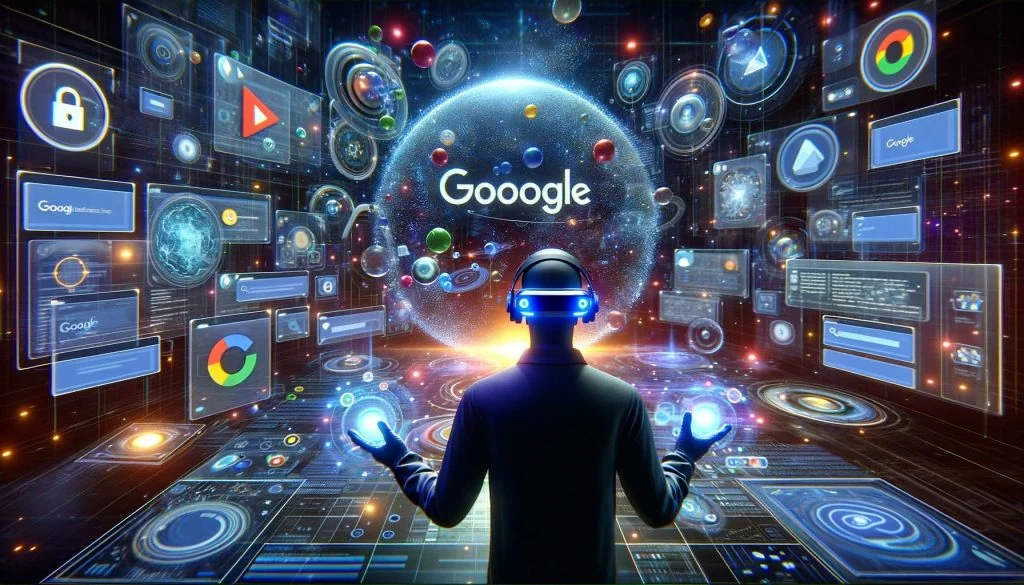

Thanks to advances in artificial intelligence and machine learning, every online search will be unique and highly personalized to your specific needs, habits, search time, and even your mood.
We expect that instead of typing, you’ll trigger searches just by thinking, and the results will appear in a virtual environment as interactive 3D objects. You can quickly store the information you want directly into your memory, similar to an internal dialogue with superintelligence.
The Google we know now may cease to exist and artificial intelligence models will handle online searches.
2. Streaming & Online TV: YouTube.com
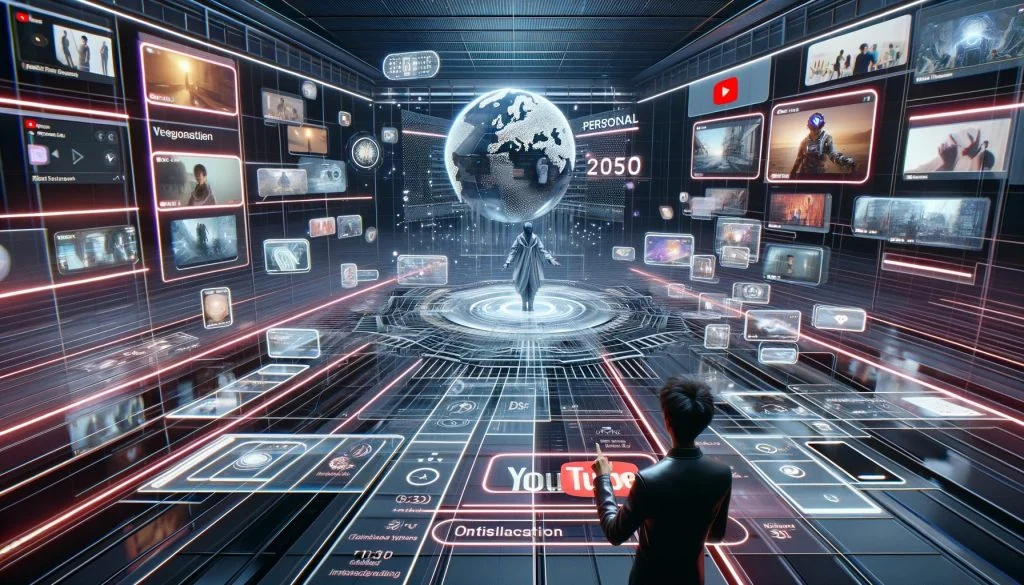

YouTube will deliver immersive experiences through virtual and augmented reality. You’ll interact with the content, shaping stories as you go, guided by tailored and personalized AI recommendations.
Social features allow you to track together around the world, fostering connections and community online. Expect interactive graphics and more dynamic videos, including 360-degree views, tactile and olfactory senses, and augmented reality add-ons for an even richer viewing experience.
When it comes to live streaming, we will capture our lives from a third-person perspective.
3. Social Media: Facebook.com
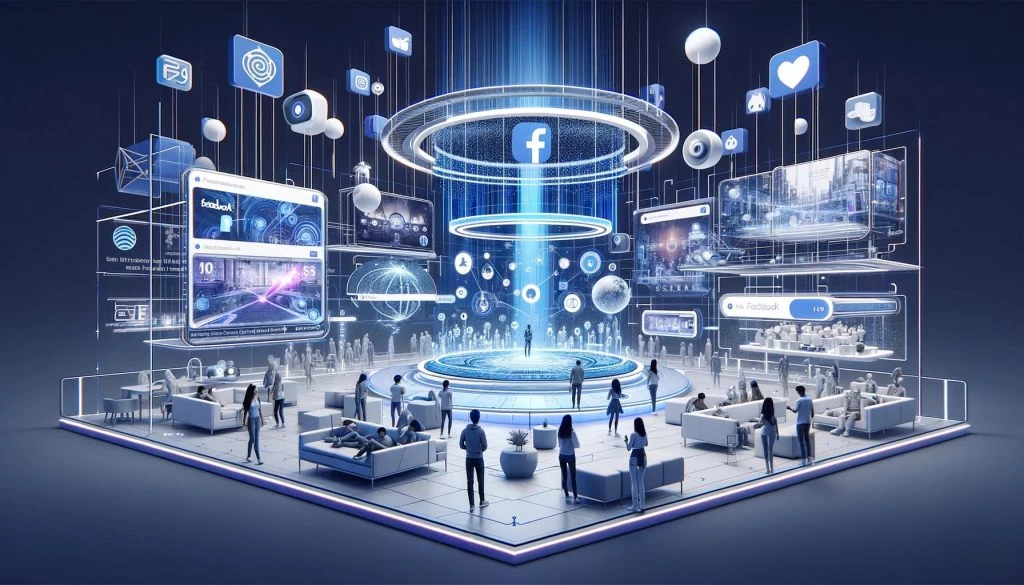

In 2050, social media platforms like Facebook will turn into massive virtual spaces where you can connect with friends and communities as if you were in the same room. You’ll join events, play games, and participate in various activities with a simple touch or even a thought.
Of course, there’s still a news feed, only more personalized and less cluttered, with smart post previews.
Additionally, our experts predict that social networks will act as hubs for collaborative projects and shared experiences, fostering a strong global sense of community.
4. Dictionaries and Encyclopedias: Wikipedia.org


The home page of the world’s largest encyclopedia will feature a dynamic, interactive globe that you can rotate to explore articles related to different regions of the world. Personalized AI assistants will provide personalized recommendations and information based on your individual learning preferences and interests.
A chip implanted in your head will store all the information you need, and AI algorithms will add and check the content instantly, so you can trust it’s accurate and up-to-date.
5. News and media publishers: Yahoo.com
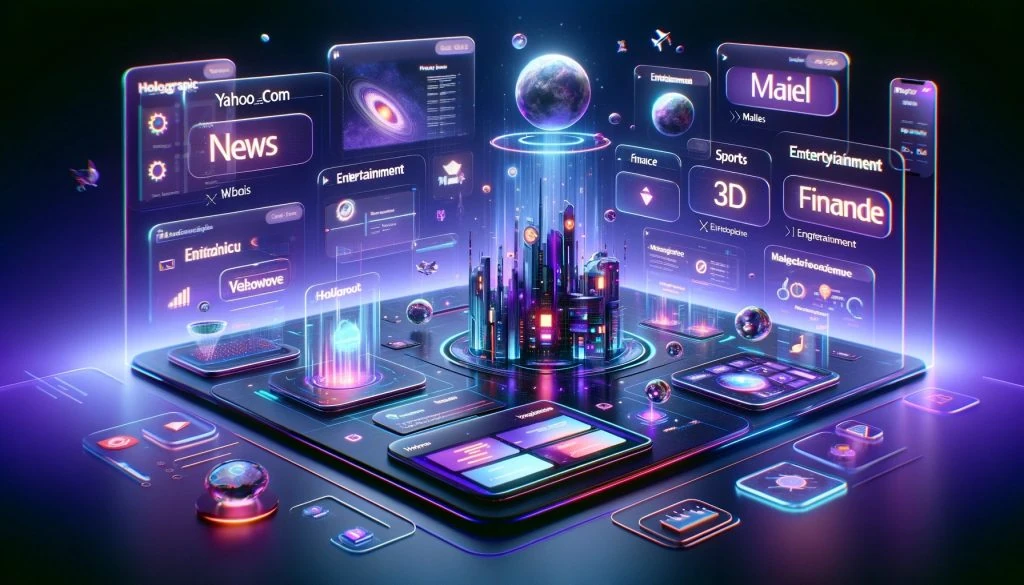

Embracing the future, Yahoo meets us with an interface rich in holographic elements and dynamic widgets that seem to float above the surface.
Each column will have interactive elements with key data and live updates. But you don’t need to read anything to learn more: just select a news item or topic that interests you and the information will be transferred to your brain.
6. E-commerce and shopping: Amazon.com
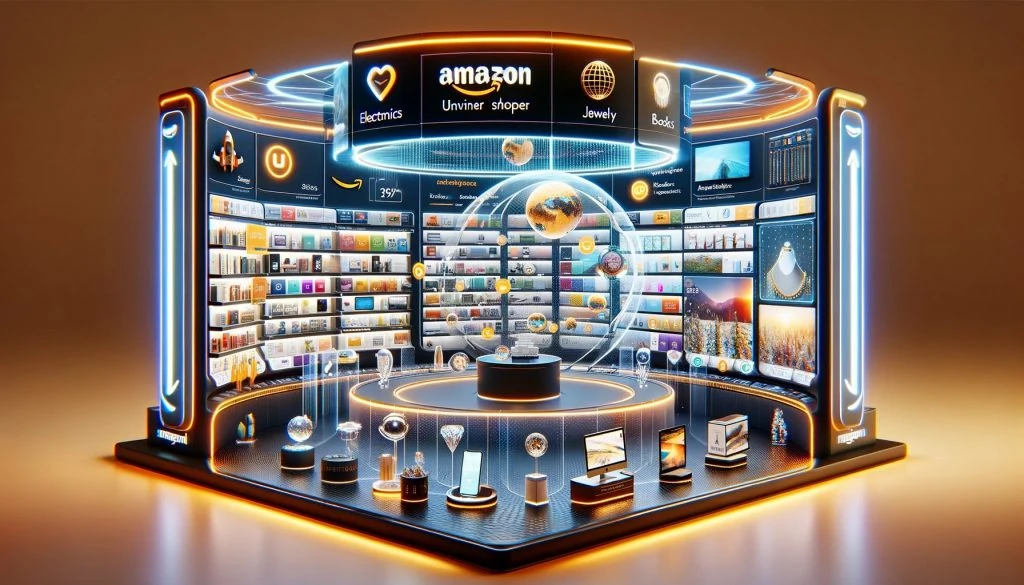

Online shopping with augmented reality will be similar to shopping in a physical store, but with fewer walks. Amazon’s interface will display products on 3D holographic screens, allowing customers to see them as if they were right in front of them.
You can even feel them using sensory gloves, and if you’re interested in clothes, just try them on in virtual reality.
Same-day delivery will become the norm as the items best suited to your needs will be prepared in advance.
7. Technology and AI: OpenAI.com
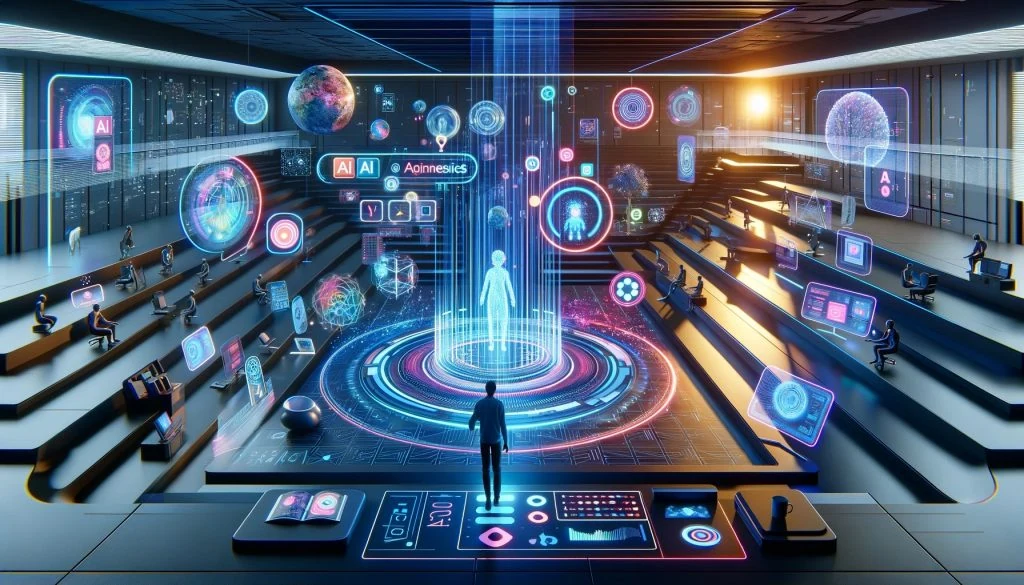

Today, OpenAI.com is essentially just a chat window. However, in the future, the interface is going to undergo significant changes.
It will transform into an environment where people can learn, create and collaborate. Users will be able to interact with the AI in different ways, including through holographic displays, interactive 3D projections, voice commands and, of course, thoughts.
Bonus: Hostinger.com
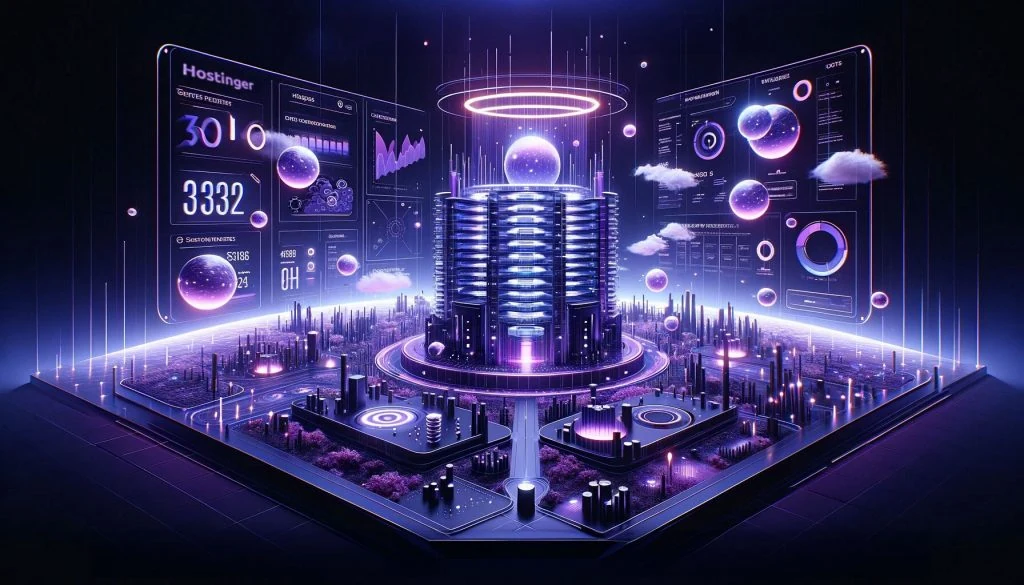

No matter how the Internet evolves, people will still create websites to share their stories, introduce businesses, or sell products and services.
Sure, these sites will look completely different, adapted to meta-verses, virtual reality and artificial intelligence devices like the Rabbit R1. But one thing is clear: Hostinger will be there to help.
In the future, publishing a website will be as simple as discussing a business idea with a friend. And it won’t take long to get to that point, as we’re already headed in that direction.
Our AI Website Builder understands speech to text and can create a unique website full of bespoke content from a single message. You can then customize it to your specific needs and go live without coding a single line.
This is just one of the many ways we leverage AI to help our clients succeed online, from creating SEO-friendly content and great graphics to choosing a domain that perfectly aligns with your business idea .
Conclusion: Step into the future of the Internet
In summary, here are the main insights from our experts on the future of the Internet, taking into account current predictions, developments in technology and what tech giants like Apple, Google and Meta are creating and developing:
- Innovative gadgets like virtual reality glasses, smart headphones, bracelets, holographic projectorsand others will replace traditional computers and telephones.
- Augmented and virtual reality it will make internet browsing a completely different experience.
- We will interact with technology through voice commands, gestures or even thoughts.
- Sites will be prioritized hyper-personalizationcustomizing content and layouts for each visitor.
- AI-generated content it will stimulate creativity and diversity while ensuring relevance and credibility.
- When it comes to web design, 3D shapes and neomorphism will gain more popularity.
- Brain implants are still being tested. However, if we can use them to send and receive data, the possibilities are endless. Online searches become a monologue in our minds, and the most important news of the day or encyclopedias could just pop into our memory.
- Starting an online business or other type of website will be as simple as talking to a friend about your idea.
Of course, these are predictions based on current perceptions. Technology changes and improves at a rapid pace, and sometimes progress moves in a different direction than expected. Only time will tell the future, but one thing is certain: it has exciting potential.

